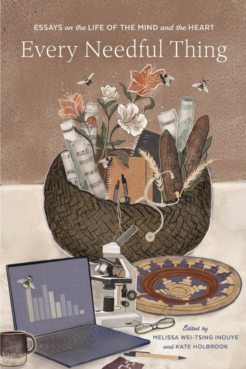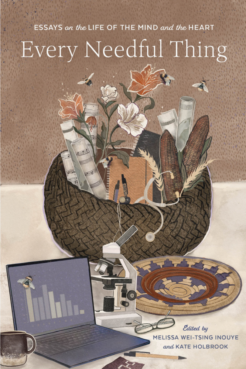
(RNS) — Sometime in the mid-1990s, I went to the ward library after sacrament meeting to obtain materials for teaching a lesson. Also waiting by the library’s tiny window with the Dutch door was a trauma nurse in her 30s, a woman I’d gotten to know through the church’s visiting teaching program. I will call her Anne.
Anne was angry and hurt, and it showed.
“That was quite a slam on working women, moms in particular,” she said. “I’m glad that works for her.”
Anne was referring to a sacrament talk we had just heard, in which a young pregnant woman in our ward (let’s call her Sarah) announced from the pulpit that, with regret, she had just quit a job she loved, one she had trained for over the course of several years. Fighting tears, Sarah said she’d resigned from the workforce because “the prophet has taught that all mothers need to stay at home with their children.”
Both Anne and I understood that Sarah was doing what she felt was right for her family, and that her comment about the prophet’s standard was not intended to be a personal judgment. But the effect of her talk on Anne, and other working LDS women, was to make the ones who did not stay home with their children feel like they were terrible mothers, and disobedient members of the church.
Anne’s comment that she was glad this reasoning worked for Sarah implied that it manifestly did not work for Anne, who loved her job and had no intention of leaving it even though she also had a young daughter at home. And even though she had a working husband and no great hardship that would necessitate her working for a paycheck.
Anne just liked working, and felt called to her career in nursing.
“Every Needful Thing: Essays on the Life of the Mind and the Heart,” edited by Melissa Wei-Tsing Inouye and Kate Holbrook. Courtesy image
I’ve been thinking about this conversation over the last week as I’ve been reading the new book “Every Needful Thing: Essays on the Life of the Mind and the Heart,” edited by my friends Melissa Wei-Tsing Inouye and the late Kate Holbrook. It’s a collection of gorgeous essays from women in all kinds of different professional careers, and it has just been co-published by the BYU Maxwell Institute and Deseret Book.
Let’s just sit with that for a minute: The book is co-published by Deseret Book, the church’s publishing arm, and proudly displayed in its retail stores.
The essayists are women from many different careers and cultures. There is a university president, a Nigerian chief judge, a botanist, a geneticist, a world-renowned expert on business in China, a clinical psychologist and many more. The women are authors and professors and doctors and mathematicians. Many are also mothers. And all are faithful members of The Church of Jesus Christ of Latter-day Saints.
I’ve said before that change happens so glacially in the church that it’s easy to miss the magnitude of it unless you’re either old enough to remember the way things used to be or have intentionally steeped yourself in its history. So, for the record, since many of us are liable to forget how recent it was that LDS mothers were routinely counseled to stay home with their children, let’s not forget what the messaging was in the not-so-distant past. In 1987, then-President Ezra Taft Benson gave a special fireside for parents in which he directed his remarks “to the mothers in Zion.”
Mothering the Lord’s way was not the same as mothering the world’s way, he instructed. LDS couples were to welcome every child the Lord might send, forgoing all that newfangled birth control in favor of supersized families like Benson’s own. So they had better get started young, he advised. In sum, Benson was foreclosing the idea of women ever getting a foothold in the workforce: They weren’t to postpone having kids when they were young or stop having kids even when they thought they’d had enough.
He expressed deep suspicion about women in the workforce at all. “In the beginning, Adam — not Eve — was instructed to earn the bread by the sweat of his brow,” he said. All the more so when they were not just women but mothers. “Contrary to conventional wisdom, a mother’s calling is in the home, not in the marketplace.”
Benson made some exceptions for sisters who were widowed or divorced, but in cases of a two-parent family, there was simply no excuse for a mother to be in the workforce:
“In a home where there is an able-bodied husband, he is expected to be the breadwinner. Sometimes we hear of husbands who, because of economic conditions, have lost their jobs and expect their wives to go out of the home and work even though the husband is still capable of providing for his family. In these cases, we urge the husband to do all in his power to allow his wife to remain in the home caring for the children while he continues to provide for his family the best he can, even though the job he is able to secure may not be ideal and family budgeting will have to be tighter.”
What was entirely absent from Benson’s talk (which was made part of the 1990 book “Come Listen to a Prophet’s Voice” and is still on the church’s official website as part of the curriculum for the Eternal Marriage Student Manual) is any notion that women might actually want to work. That they, like men, are called to other things in life besides parenthood, and that they deserve the chance to develop their talents and pursue their God-given interests. That the career/motherhood question is not an either-or proposition.
Slowly over the years, I’ve watched the church take its baby steps toward progress. First, in the late 20th century, it stopped demonizing working mothers and naming them as one of the signs of society’s moral decline, which had been a regular fixture of the church’s rhetoric in the 1970s and into the 1980s. Historian Colleen McDannell chronicles in her book “Sister Saints” that male LDS leaders faced a dilemma when the church began expanding around the world.
“When the church begins becoming a global church after 1978, leaders realize that while in the U.S. you might be able to have a line that tells women to stay home with their children, it doesn’t work in Ecuador or Ghana or Mexico,” McDannell said in a 2018 Religion News Service interview. “Women there work in jobs that are dangerous and hard, and they don’t do it because they’re looking for self-fulfillment. They’re feeding their families. They are the financial center of these families. So if you are a leader trying to be in any way realistic in dealing with a church that’s growing in the Southern Hemisphere, you have to pay attention to women who work.”
So the first shift was LDS leaders going quiet about the evils of women in the workplace. Then, in the 21st century, it started quietly hiring more women and eliminating archaic rules, like about women being ineligible to work full time for the church’s educational system if they still had minor children at home. (That policy did not change completely until 2014.)
More recently, the church has actually begun celebrating women’s accomplishments outside the home. That’s the kind of inspiration we’re seeing in “Every Needful Thing.” Finally.
But it’s percolating elsewhere too. For example, this month two BYU researchers released a 13-year study on the effects of missionary service on female missionaries’ graduation rates, choice of college major and future earnings potential.
We see it in the women who lead the church’s organizations that we’re no longer supposed to call “auxiliaries” (which is in itself an interesting shift). The current Relief Society general presidency is made up of Camille Johnson, an attorney and mother of three; J. Anette Dennis, a stay-at-home mother of four; and Kristin Yee, an artist who has worked for Disney and is single.
The general presidencies of the Primary and Young Women organization likewise feature a mix of women who have had careers and those who stayed home full time.
Which is great. We want a mix of experiences — that diversity is an expression of more women having real choices. What I hope we never, ever return to is the shame that working mothers were often made to feel in the church.
Related content:
Progress for Mormon women: A historian takes the long view
Younger Mormons far more likely to be troubled by women’s roles in the LDS Church, study shows

